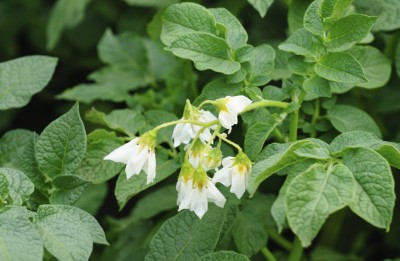






The Solanum family of plants is a large genus under the family umbrella of Solanaceae that includes up to 2,000 species, ranging from food crops, such as the potato and the tomato, to various ornamentals and medicinal species. The following entails interesting information about the Solanum genus and types of Solanum plants.
The Solanum plant family is a diverse group containing both annuals to perennials with everything from vine, subshrub, shrub and even small tree habits.
The first mention of its generic name comes from Pliny the Elder at the mention of a plant known as ‘strychnos,’ probably Solanum nigrum. The root word for ‘strychnos’ may have come from the Latin word for sun (sol) or possibly from ‘solare’ (meaning “to soothe”) or ‘solamen’ (meaning “comfort”). The latter definition refers to the soothing effect of the plant upon ingestion.
In either case, the genus was established by Carl Linnaeus in 1753. Subdivisions have long been disputed with the most recent inclusion of the genera Lycopersicon (tomato) and Cyphomandra into the Solanum plant family as subgenera.
Nightshade (Solanum dulcamara), also called bittersweet or woody nightshade as well as S. nigrum, or black nightshade, are members of this genus. Both contain solanine, a toxic alkaloid that, when ingested in large doses, can cause convulsions and even death. Interestingly, the deadly belladonna nightshade (Atropa belladonna) is not in the Solanum genus but is a member of the Solanaceae family.
Other plants within the Solanum genus also contain solanine but are regularly consumed by humans. Potatoes are a prime example. The solanine is most concentrated in the foliage and the green tubers; once the potato is mature, solanine levels are low and safe to consume as long as it is cooked.
Tomato and eggplant are also important food crops that have been cultivated for centuries. They, too, contain toxic alkaloids, but are safe for consumption once they are fully ripe. In fact, many of the food crops of this genus contain this alkaloid. These include:
There are a plethora of ornamentals included in this genus. Some of the most familiar are:
There are also a number of Solanum plants used primarily in the past by native people or in folk medicine. Giant devil’s fig is being studied for treatment of seborrhoeic dermatitis, and in the future, who knows what medical uses may be found for Solanum plants. For the most part though, Solanum medical information primarily concerns poisonings which, while rare, can be fatal.
Copyright © www.100flowers.win Botanic Garden All Rights Reserved